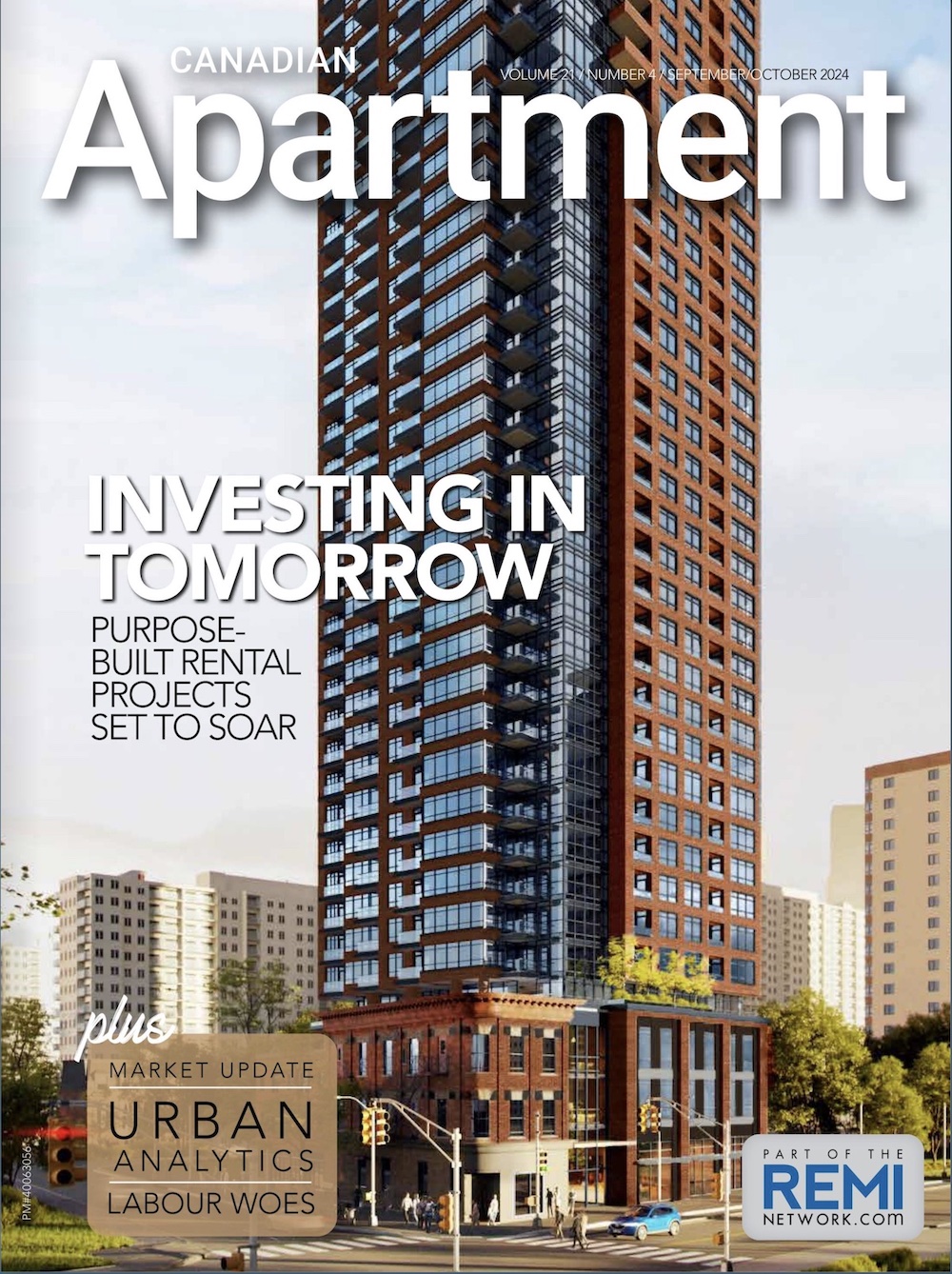Prominent real estate analysts are promoting co-living as a potential next big thing in Canada’s ever-tightening rental housing market. CBRE identifies dormitory-style dwellings offering private bedrooms with shared kitchen and living space as an emerging trend in commercial real estate.
“This style of apartment is designed to accommodate a greater number of renters while still responding to rising development costs and increasing rental rate sensitivity,” reports CBRE’s newly released Canadian Real Estate Market Outlook 2019 — which tags co-living as an example of “rethinking real estate” along with co-working, specialized facilities for last-mile delivery, food halls and proptech innovation.
However, a recent study of planning policies in major Canadian cities suggests that local governments may not be so receptive to a concept more traditionally known as rooming houses or single room occupancy (SRO) buildings. Nor is student housing necessarily an effective analogy for selling the idea to decision-makers and prospective neighbours. University of Toronto adjunct professor Philippa Campsie notes that much of the current negative sentiment relates to the emergence of informal rooming houses in predominantly single-family residential areas near suburban post-secondary campuses.
“When we (city dwellers, city planners, city councillors) talk about rooming houses, we usually talk about how best to regulate them, followed by how to enforce those regulations,” she observes in a research paper released last year through the Neighbourhood Change Research Partnership. “The dilemma for municipalities is to regulate these new kinds of rooming houses in a way that protects tenants who need affordable housing near where they work or study, while placating residents who would prefer not to have rooming houses in their neighbourhoods.”
Her overview of municipal regulations and licensing practices paints a picture of a nationwide stigmatized housing form, but that arguably validates the case for rethinking real estate. Paul Morassutti, vice chair of CBRE Canada, is fittingly philosophical.
“Growth is often synonymous with discomfort. In many Canadian cities, real estate will remain at the forefront in both regards,” he muses.
Accessibility and affordability frustrations
The 2019 Market Outlook tallies market factors that could push local officials to reassess their assumptions and priorities — most notably, continuing low vacancy rates, steep housing costs that hinder rental turnover and intense competition as population growth outpaces new supply. Across the 13 large urban markets it surveys, CBRE projects a slight easing in the vacancy rate over the coming year, bumping upward from 2.4 to 2.5 per cent, but that will be accompanied by an increase of nearly 3 per cent, from $1,238 to $1,274, in average rent for two-bedroom units.
“Availabilities will continue to be almost non-existent in major downtown centres,” CBRE cautions. “This will only add to frustration around housing accessibility and affordability coast-to-coast.”
Drilling down to specific markets, Montreal will capture 35 per cent, or more than 12,100, of the new purpose-built units expected to be completed this year, pushing the city’s vacancy rate up 60 basis points to 2.5 per cent. Even with a projected $10 increase this year, the average rent for two-bedroom units — at $819 — will be well below the national average.
Vancouver can also look forward to nearly 8,300 new purpose-built units and a 30 basis point jump in the vacancy rate, to 1.3 per cent. Meanwhile, about 5,550 new purpose-built units will come onto the Toronto market, but the vacancy rate is projected to slip 10 basis points, down to just 1 per cent. Average rents for two-bedroom units are expected to increase in both cities, to $1,539 in Toronto and $1,724 in Vancouver.
On the landlords’ side of the equation, already record-low cap rates are expected to dip even further this year. Coupled with sluggish turnover that’s hindering opportunity to renovate and raise rents in existing units, CBRE points to “an aggressive appetite from both domestic and international capital” that could potentially finds its way to the envisioned co-living projects.
“The stability of the sector has become increasingly enticing for investors given recent financial volatility, economic uncertainty and increased liquidity, which has placed significant upward pressure on pricing,” observes David Montresssor, executive vice president with CBRE’s national apartment group, “Cap rates in this sector continue to be the lowest of any asset class in Canada and investors are increasingly open to sacrificing going-in yield in exchange for the possibility of future rent growth.”
Even in the hard-hit markets of Calgary and Edmonton, the multifamily sector stands out as a bright spot. CBRE analysts project a slight increase in average rents for 2019, while the vacancy rate hovers around 5 per cent in both cities. New purpose-built rental housing is also due for completion this year, adding about 1,700 units in Calgary and nearly 1,100 in Edmonton.
Some investors are also looking at the pent-up demand for downtown housing options in light of still-rising vacancies in older office stock. “Due to financial inefficiencies, some owners are reviewing conversion opportunities as a viable option to repurpose these obsolete buildings. Recent projects in Edmonton have trended towards multifamily and hospitality conversions,” CBRE reports.






